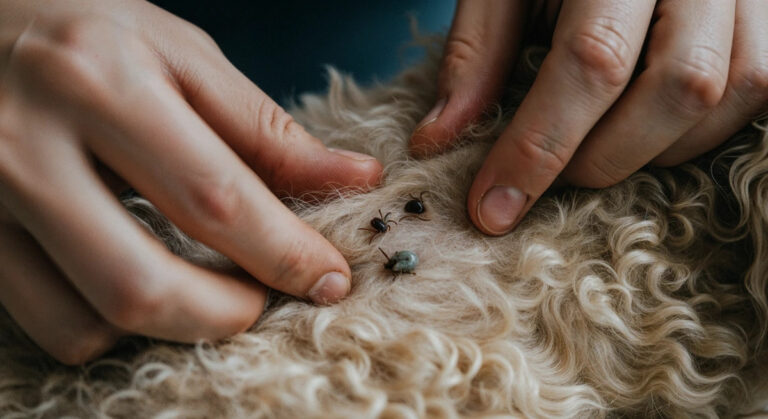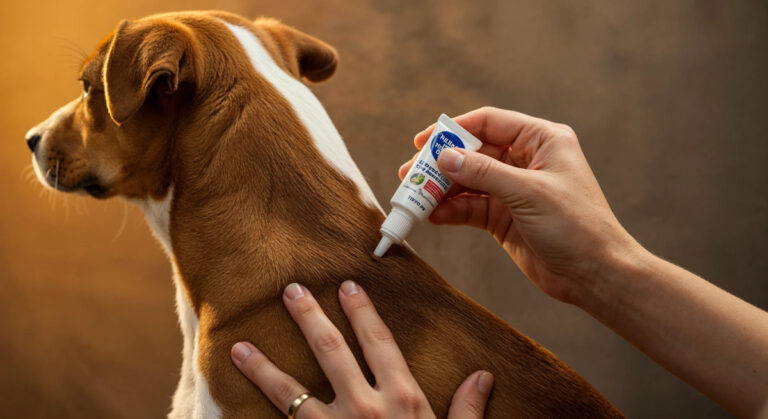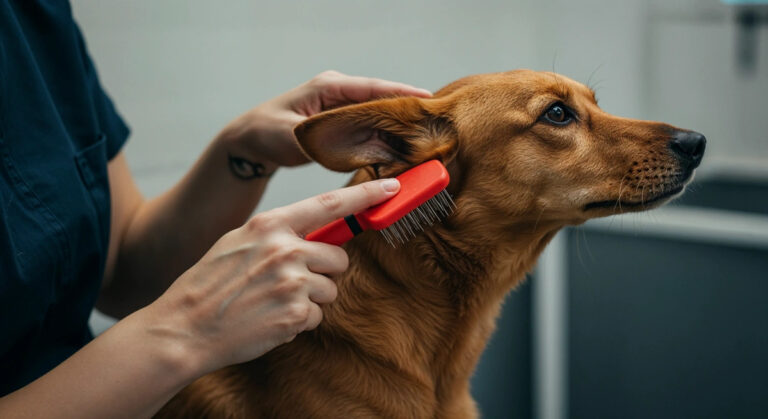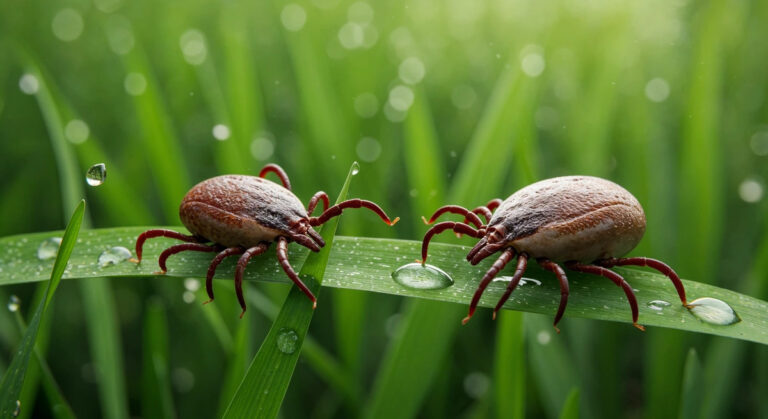Fleas on Dogs

Imagine this: your furry best friend is having the time of their life—playing in the grass, chasing squirrels, and basking in the sunshine. Suddenly, they’re scratching uncontrollably, and you spot tiny, hopping intruders settling comfortably into your dog’s coat. Yes, it’s official—fleas have joined the paw-ty.
Fleas aren’t just minor annoyances; they’re the unwanted guests who refuse to leave, inviting their entire clan along for the ride. These pesky parasites aren’t merely irritating—they can severely bother your pup. Persistent itching is just the beginning; fleas can trigger allergic reactions, skin infections, and even lead to anemia if the infestation becomes severe.
So, how exactly do these tiny pests invade your dog’s happy life? Fleas are master infiltrators, sneaking indoors through cracks, crevices, or hitching rides on visitors, whether human or furry. Once they’ve landed on your pup, they multiply rapidly, transforming a handful of fleas into a full-blown infestation within days, leaving both you and your dog scratching your heads (and everything else!).
Overview of fleas
Fleas are tiny, wingless parasites that frequently infest dogs, causing considerable discomfort and various health problems. These pests feed on your dog’s blood, resulting in severe itching, irritation, and stress. Additionally, flea bites can trigger allergic reactions, leading to skin inflammation and possible infections. In extreme situations, a prolonged flea infestation can result in anemia, particularly affecting puppies and smaller breeds.
Typically, fleas find their way into your dog’s environment by hitching rides on other pets, humans, or entering through small openings in your home. Once established on your dog, fleas multiply quickly, turning a minor issue into a significant infestation. Therefore, early detection, prevention strategies, and timely treatment are crucial to maintaining your dog’s comfort and health.
The flea life cycle
1) Eggs
Flea eggs are small, white, and oval-shaped. They’re typically laid directly on your dog’s fur but quickly fall into the environment—carpets, bedding, and furniture—where they hatch within days.
2) Larvae
Larvae emerge from the eggs as tiny, worm-like creatures. They feed on organic debris, including flea droppings. Larvae thrive in dark, protected areas such as carpets and bedding, maturing within a week or two.
3) Pupa
After feeding sufficiently, larvae spin protective cocoons, entering the pupal stage. Pupae can remain dormant for weeks or even months, safely awaiting ideal conditions—like warmth, humidity, or vibrations indicating a host is nearby—to emerge.
4) Adult
Fully grown adult fleas emerge from the cocoon, immediately seeking a host (your dog) to feed on. Adult fleas begin reproducing within days, restarting the cycle and rapidly escalating an infestation if left untreated.
Symptoms of a flea infestation
-
Excessive Itching and Scratching: Dogs infested with fleas frequently scratch, bite, or lick their skin, especially around the neck, tail base, and hindquarters.
-
Redness and Skin Irritation: Flea bites often cause inflammation, redness, and skin irritation, potentially leading to hot spots or lesions.
-
Hair Loss: Persistent scratching and biting due to flea irritation can lead to patches of hair loss (alopecia).
-
Flea Dirt (Flea Droppings): Black or reddish-brown specks, resembling pepper flakes, may be visible on your dog’s coat or bedding. These specks turn reddish when moistened, confirming flea activity.
-
Restlessness or Anxiety: Dogs may display increased restlessness, agitation, or discomfort due to constant itching and irritation.
-
Visible Fleas: You might notice small, dark, fast-moving insects jumping through your dog’s fur or on household surfaces.
-
Skin Infections or Allergic Reactions: Dogs sensitive to flea saliva can develop allergic dermatitis, resulting in severe inflammation, infections, or sores.
Identifying these symptoms promptly can help in effectively managing flea infestations and keeping your dog healthy and comfortable.
Diseases Transmitted by Fleas
Fleas aren’t merely a nuisance; they pose significant health risks to dogs by transmitting various diseases. Understanding these conditions thoroughly is essential for safeguarding your dog’s health:
1. Tapeworm Infections
Fleas frequently carry tapeworm larvae, and dogs typically ingest fleas while grooming themselves, leading to tapeworm infections. Common symptoms include weight loss despite normal appetite, gastrointestinal distress, diarrhea, lethargy, and visible worm segments around the dog’s anus or in feces.
2. Flea Allergy Dermatitis (FAD)
Flea Allergy Dermatitis is an allergic reaction triggered by flea saliva. Even a single bite can lead to severe itching, redness, inflammation, hair loss, and painful skin sores. Repeated scratching and biting can break the skin, leading to secondary bacterial infections.
3. Bartonellosis (Cat Scratch Disease)
Though named after cats, bartonellosis is also transmissible to dogs. Fleas carrying Bartonella bacteria can infect your dog, leading to symptoms such as fever, fatigue, swollen lymph nodes, joint pain, inflammation of the eyes (uveitis), and potentially inflammation of the heart (endocarditis). This disease can be challenging to diagnose due to varied and subtle symptoms.
4. Anemia
Fleas feed on blood, and severe infestations can result in significant blood loss, causing anemia—particularly dangerous for puppies, elderly dogs, or small breeds. Symptoms include pale gums, rapid breathing, fatigue, weakness, and reduced appetite. If untreated, severe anemia can be life-threatening.
5. Murine Typhus
Murine typhus, though less common, is a bacterial disease spread by fleas carrying Rickettsia typhi. Dogs infected may exhibit fever, lethargy, vomiting, diarrhea, loss of appetite, and a general sense of discomfort. Veterinary diagnosis and antibiotic treatment are essential for recovery.
6. Plague
Though rare, fleas can also transmit plague, caused by the bacterium Yersinia pestis. Dogs infected by plague typically display severe and sudden symptoms such as high fever, lethargy, enlarged lymph nodes, difficulty breathing, and vomiting. Immediate veterinary intervention and treatment are critical, as plague can be rapidly fatal.
7. Hemotropic Mycoplasmosis (Hemobartonellosis)
Hemotropic Mycoplasmosis is a blood infection transmitted by fleas infected with Mycoplasma bacteria. It primarily affects red blood cells, causing anemia and symptoms such as lethargy, weakness, pale gums, rapid heartbeat, and weight loss. Early diagnosis through blood tests and appropriate antibiotic treatments are crucial for recovery.
Topical Flea Treatments

Topical flea treatments, commonly known as “spot-on” treatments, are widely used for controlling and preventing flea infestations. They consist of liquid medications applied directly to a dog’s skin, usually between the shoulder blades or along the spine. The medication spreads throughout the dog’s body via natural oils in the skin, providing continuous protection against fleas.
Advantages of Topical Flea Treatments:
-
Ease of Use: Convenient to administer at home, typically only once per month.
-
Quick Action: Generally starts killing fleas within 24 hours of application.
-
Extended Protection: Most formulations remain effective for a full month.
-
Broad Spectrum: Many topical treatments also target other parasites like ticks, mites, lice, and sometimes even mosquitoes.
-
Water-resistant: Most topical treatments retain efficacy even if your dog swims or gets wet occasionally.
Disadvantages of Topical Flea Treatments:
-
Potential Skin Irritation: Some dogs might experience skin redness, irritation, or allergic reactions at the application site.
-
Toxicity Risk: Incorrect dosages or improper application can lead to toxicity, especially in smaller breeds or puppies.
-
Reduced Effectiveness in Frequent Bathers: Dogs that are frequently bathed or swim often might experience reduced effectiveness of topical treatments.
-
Limited Use with Certain Conditions: Dogs with sensitive skin conditions or allergies may not tolerate topical treatments well.
-
Environmental Transfer: Residue from topical treatments can transfer to household items or humans, posing minor exposure risks.
Application Tips:
-
Apply directly onto the skin by parting the fur to ensure proper contact.
-
Avoid bathing your dog for at least 48 hours before and after application.
-
Always select the correct dosage according to your dog’s weight.
Safety Considerations:
-
Follow the manufacturer’s directions carefully.
-
Monitor your dog for any adverse reactions, such as skin irritation or behavioral changes.
-
Avoid contact with eyes, mouth, and your own skin; wash hands thoroughly after application.
-
Consult your veterinarian before applying treatments, especially in puppies, elderly dogs, or dogs with health issues.
Regular and proper use of topical flea treatments can effectively keep your dog safe, healthy, and free from fleas and other parasites.
Oral Flea Treatments

Oral flea treatments are medications given by mouth, typically as chewable tablets or pills, designed to prevent or quickly eliminate flea infestations. These treatments work from within the dog’s system, spreading through the bloodstream to kill fleas when they bite your pet.
Advantages of Oral Flea Treatments:
-
Ease of Administration: Typically formulated as flavored chews or tablets, making them easy for dogs to consume.
-
Rapid Effectiveness: Often begins killing fleas within a few hours, providing quick relief.
-
Convenient and Clean: No risk of medication residue transferring to furniture, bedding, or human skin.
-
Consistent Dosage: Ensures accurate dosing, reducing risks of under or overdosing.
-
Effective in Frequent Bathers: Effectiveness is not impacted by bathing or swimming.
Disadvantages of Oral Flea Treatments:
-
Potential Gastrointestinal Upset: Some dogs may experience nausea, vomiting, or diarrhea after taking oral flea medications.
-
Limited Parasite Coverage: Some oral treatments exclusively target fleas, requiring additional medications for other parasites such as ticks or heartworms.
-
Adverse Reactions: Rare but serious side effects can include neurological issues like seizures or lethargy, especially in dogs sensitive to medication.
-
Need for Regular Administration: Must be administered strictly on schedule to maintain continuous flea control.
Administration Tips:
-
Administer oral treatments with food or treats to minimize gastrointestinal upset.
-
Ensure you choose the correct dosage based on your dog’s exact weight and health status.
-
Schedule regular monthly or quarterly doses as recommended to maintain effective flea control.
Safety Considerations:
-
Monitor your dog closely after administration for any adverse reactions.
-
Always follow veterinarian recommendations and medication guidelines strictly.
-
Consult your veterinarian before starting oral treatments, particularly for puppies, elderly dogs, or those with pre-existing health conditions.
Regular, carefully monitored use of oral flea treatments provides effective, reliable flea control, contributing significantly to your dog’s overall comfort and health.
Tips for Flea Prevention

Effective flea prevention involves a combination of routine care, regular maintenance, and environmental management. Here are comprehensive tips to help keep fleas away from your dog and home:
1. Regular Flea Treatments
-
Consistently use veterinarian-approved flea prevention products, such as topical treatments, oral medications, or flea collars.
-
Follow the product guidelines carefully to maintain continuous protection.
2. Environmental Management
-
Regularly vacuum carpets, rugs, furniture, and pet bedding to remove flea eggs and larvae.
-
Wash pet bedding and linens weekly in hot water to kill flea eggs and larvae.
-
Consider using flea sprays or insect growth regulators (IGRs) in your home to target flea development.
3. Yard Maintenance
-
Keep your lawn regularly mowed and clear of debris, leaves, and tall grass where fleas often thrive.
-
Use pet-safe yard treatments to manage outdoor flea populations, especially in shaded, damp areas.
4. Regular Grooming
-
Regularly comb your dog with a flea comb to detect early signs of infestation.
-
Bathe your dog using veterinarian-approved flea shampoos if necessary, but avoid frequent bathing that may reduce the effectiveness of topical treatments.
5. Routine Veterinary Visits
-
Schedule regular veterinary check-ups to monitor your dog’s overall health and promptly address flea prevention strategies.
-
Follow veterinarian recommendations for flea control tailored to your dog’s lifestyle, environment, and health status.
6. Limit Exposure to Flea-Prone Areas
-
Avoid letting your dog roam in areas with dense vegetation, woodpiles, or damp environments that attract fleas.
-
Regularly inspect your dog after outdoor activities, especially hiking or visits to dog parks.
7. Holistic and Natural Methods
-
Consider using natural deterrents such as diluted essential oils (vet-approved), diatomaceous earth, or flea-repellent plants.
-
Always consult your veterinarian before implementing natural treatments to ensure they are safe and effective for your dog.
8. Monitor and Act Quickly
-
Regularly check your dog for signs of fleas or flea dirt.
-
Address any flea infestations promptly to avoid severe infestations that are harder and more expensive to manage.



